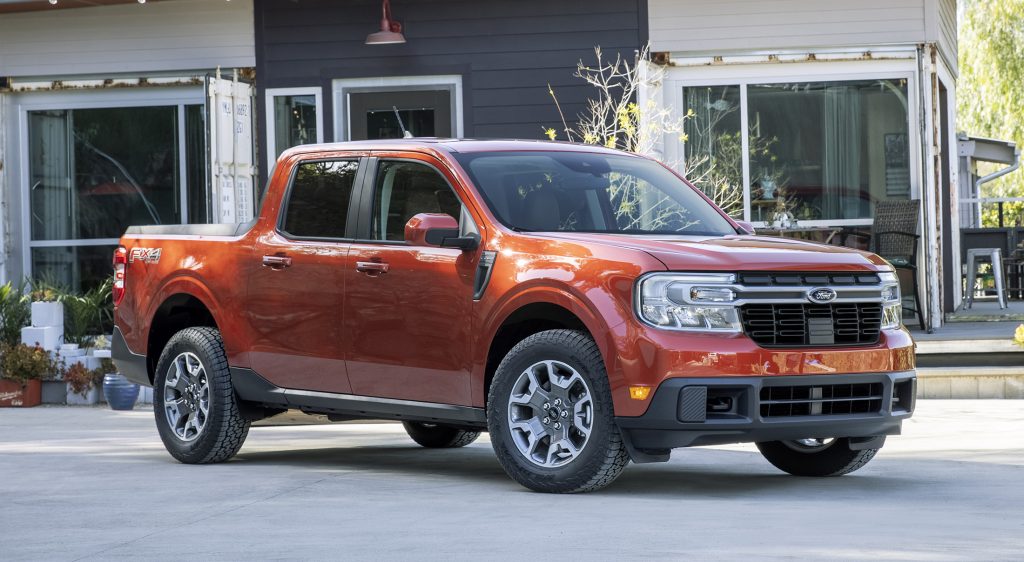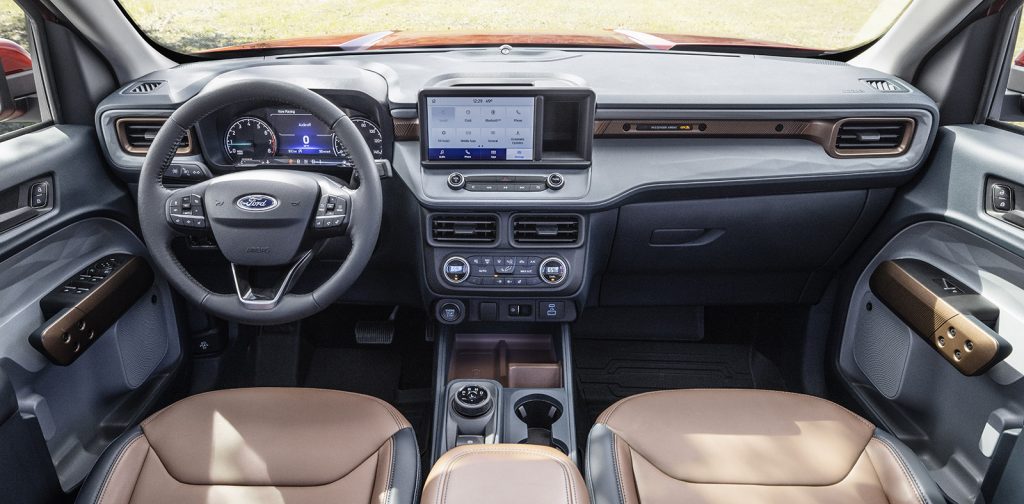Cargazing
By Derek Price
For those of us seasoned enough to remember the Ford Ranger as a compact, no-frills pickup, the truck I’m driving this week is a breath of fresh air.
It’s called the Maverick, and it’s got more in common with the old Ranger than the contemporary version.
Today’s Ranger is sized, priced and powered more like a slightly scaled-down F-150 than a basic Home Depot runabout. That left a gaping hole at the bottom of Ford’s pickup line for something simpler, smaller and more affordable than the Ranger, which starts at $25,500.
The Maverick starts at a paltry $19,995, making it one of the few new vehicles — and the one and only new pickup sold in America — priced below the $20,000 mark this year. That’s especially noteworthy at a time when inflation, the ongoing pandemic and supply-and-demand economics are working in tandem to drive the prices of trucks and SUVs to stomach-churning highs recently.
If Ford had done nothing but launch a basic, compact truck priced under $20,000, that alone would have caused an earthquake in the truck-sales world. But they went even further.

Priced under $20,000 with a fuel-sipping hybrid powertrain, the Ford Maverick is a simple, affordable pickup that the market has been lacking ever since the Ranger was discontinued in 2011.
For one thing, the Maverick is based on a car-like unibody platform, which helps greatly with fuel efficiency but invites criticism from purists who insist “real” trucks have bodies atop stout frames. Construction-wise, it falls into the same category as the Honda Ridgeline and new Hyundai Santa Cruz, both of which are built using car platforms.
For another, the base Maverick is a hybrid rated at 42 mpg in city driving.
A 2.5-liter gasoline engine is paired with electric motors to hit that eye-popping efficiency number, something especially appealing to the same buyers who love its sub-$20k price tag. That’s bound to make it a sales hit, assuming Ford can build enough of them.
My tester wasn’t a hybrid, though, so I can’t vouch for the performance of its 191-horsepower drivetrain.
The version Ford sent me had plenty of oomph from its upgraded — but not nearly as efficient — 2.0-liter turbocharged engine. The four-cylinder EcoBoost in the Maverick Lariat tester makes 250 horsepower and 277 pound-feet of torque, which feels like borderline overkill from the driver’s seat.
With front-wheel drive, the EcoBoost is rated for a still-reasonable 23 mpg in city driving and 30 on the highway. Opting for all-wheel drive drops those figures by 1 mpg.
How does it work as a truck, though?

The Maverick comes standard with an 8-inch touchscreen that is compatible with Apple CarPlay and Android Auto.
For what it’s built to do — trips to the home-improvement store, hauling away debris and some light towing — it’s absolutely brilliant. The 4.5-foot bed is designed to be customized by DIY types, and it can carry 1,500 pounds of payload.
For towing, the Maverick is rated to pull up to 2,000 pounds with the hybrid powertrain or up to 4,000 pounds with the EcoBoost engine. Ford says that’s “enough to bring a typical 23-foot camper on a weekend getaway.”
Overall, I think the Maverick is exactly what a lot of potential truck buyers have been craving. For people who see full-size or even mid-size trucks as overkill, the market is overdue for something simple, efficient and affordable that can do light truck tasks without breaking the bank.
At A Glance
What was tested? 2022 Ford Maverick Lariat FWD ($25,490). Options: Equipment group 500A ($1,085), 2.0-liter EcoBoost engine ($135), moonroof ($795), Ford Co-Pilot360 ($540), spray-in bedliner ($495). Price as tested (including $1,495 destination charge): $30,035
Wheelbase: 121.1 in.
Length: 199.7 in.
Width: 72.6 in.
Height: 68.7 in.
Engine: 2.0-liter turbocharged four cylinder (250 hp, 277 lbs.-ft.)
Transmission: Eight-speed automatic
Fuel economy: 23 city, 30 highway
RATINGS
Style: 9
Performance: 8
Price: 7
Handling: 4
Ride: 6
Comfort: 7
Quality: 7
Overall: 7
Why buy it?
It’s exactly what a lot of truck buyers have been craving: a simple, affordable, truly compact truck that fills the gap left after the old Ford Ranger was discontinued.
